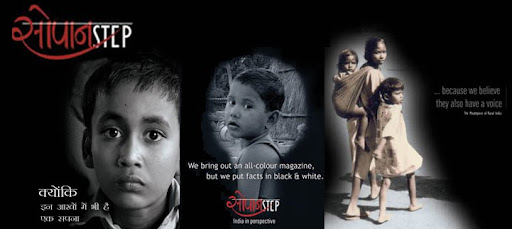
Kumari Chitra/ Patna
Biharis are an enterprising and hardworking people. Lack of opportunities back home has forced them to migrate and work in all kinds of situations, including in hostile terrains. To fulfil their dreams and aspirations, educated youths have to venture out of state. But the situation is slowly changing for the good.
A few entrepreneurs have set out to tap the huge human resource potential of the state by starting business processing outsourcing (BPO) units in hinterlands. Their argument is that if a Bihari youth can excel in BPO firm in Bangalore or Gurgaon for that matter, he can very well excel back home too. What is needed is skill development opportunities.
The advantages are many for this business model. The BPO get cheap manpower while the employee gets a job near his home. RK Paswan, an intermediate of science student, had only heard about computers a few years ago. He now sits in front of an LCD monitor surfing Internet, tweet his mind and chat with his friends. During breaks, he will go to his home to taste delicacies prepared by his mother.
Students of over 150 villages of Madhubani, Darbhanga and Samastipur, Motihari and Betiah need not have go now to neighbouring towns to get computer education. Knowledge and daily utility kiosks are at their doorsteps.
Rahika village of Madhubani is a great case in point to village BPOs' tagline that believes "towns are now being set among villages". Right from get eyesight check to seeking insurance cover from leading companies, villagers can buy mobile phones, recharge coupons, herbal beauty products, solar lamps, lever torches and even micro education loan up to R15,000 at these kiosks.
Saurath village of Madhubani has got the state's first-ever rural BPO that works as a nodal unit for all kiosks.
Over 5,000 students including rural girls have got diploma in cyber gateway programme (6 month) and advanced nine-month diploma in software programme at these kiosks. Several of them have now moved out of their villages to get jobs in Bihar towns and also in New Delhi, Mumbai and Kolkata. Drishtee organizes employment fairs at regular intervals.
Quiver Infoservices Limited under Drishtee Development and Communications Limited (DDCL), a public limited company, has been bringing about knowledge revolution in Mithila villages. They started the mission of "connecting village to village" in 2004 from a single kiosk at Saurath and have now taken it to 35 kiosks and 75 village resource centres (VRC) and rural retail points centres (RRPC). VRCs provide English speaking courses, insurances and market products. RRPCs have only insurance and market products.
Besides Madhubani, Quiver Infoservices Limited has been operating 20 kiosks at Munger, Samastipur, Vaishali, Sitamarhi and Muzaffarpur.
Satyan Mishra, a Delhi School of Economics pass-out, has been instrumental behind the idea. Drishtee Foundation has over 8,000kiosks at Bihar, Assam, UP, Haryana and Northeastern states.
Rural BPO manager KK Jha, who has worked as an IT advisor with UNDP in Darwin, Australia, said: "I am immensely satisfied with working with a village BPO. It is like a homecoming with a great mission of connecting India". Kamlesh's associate Shishir Jha has also left a Jhansi job for the BPO near his hearth and home.
Kamlesh said convincing people about technology had been a big problem. "We had to change mindsets of people before enlightening them. I still remember how our first batch of computer students would spread gutkha covers all around. But they learnt to keep it clean soon".
Kiosks have directly and indirectly employed over 300 youths, some of them earning between Rs 3,000 and Rs 7,000. BPO, however, can employ only 20 people. BPO runs on diesel-run generator. All kiosks get Internet services through V-SAT.
The BPO does data entry for companies and also engages in translation, typing, cut and paste job and all-bound insurance services and control all kiosks. These kiosks have been getting big public response at Satghara, Bijalpura, Simri, Basaith, Gurmaha and Rahika panchayats of Madhubani and Rajaura in Darbhanga.
Murhaddi panchayat kiosk operator Chandrashekhar is so enthused about villagers' response that he had now procedures four computers and a laptop for them. He has also employed two staffers at his kiosk. Gurmaha panchayat Narendra Kumar Lal is so busy in far off villages that his mobile phone mostly says 'unreachable".








